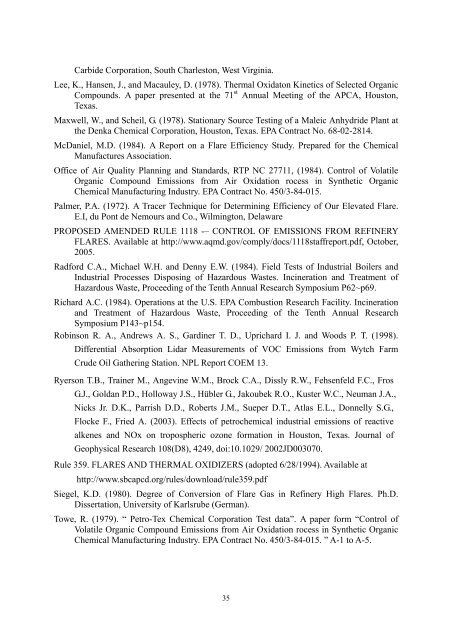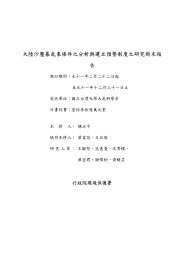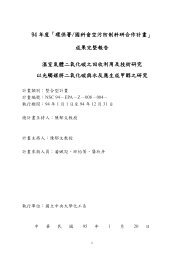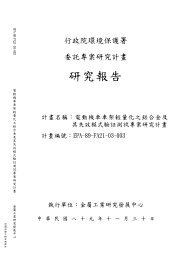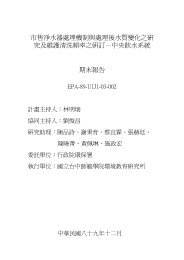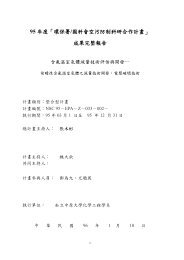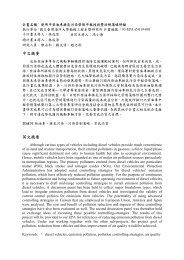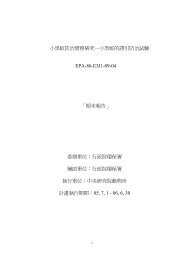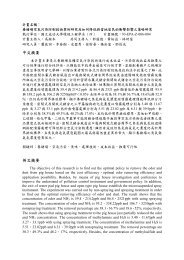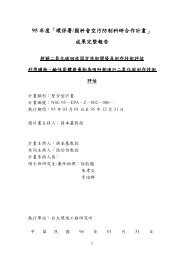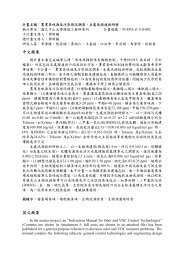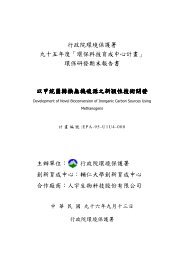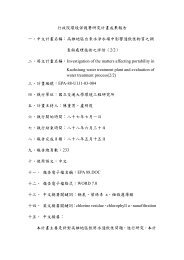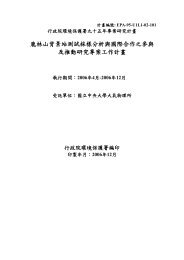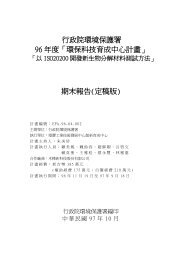NSC-96-EPA-Z-006-001
NSC-96-EPA-Z-006-001
NSC-96-EPA-Z-006-001
Create successful ePaper yourself
Turn your PDF publications into a flip-book with our unique Google optimized e-Paper software.
Carbide Corporation, South Charleston, West Virginia.Lee, K., Hansen, J., and Macauley, D. (1978). Thermal Oxidaton Kinetics of Selected OrganicCompounds. A paper presented at the 71 st Annual Meeting of the APCA, Houston,Texas.Maxwell, W., and Scheil, G. (1978). Stationary Source Testing of a Maleic Anhydride Plant atthe Denka Chemical Corporation, Houston, Texas. <strong>EPA</strong> Contract No. 68-02-2814.McDaniel, M.D. (1984). A Report on a Flare Efficiency Study. Prepared for the ChemicalManufactures Association.Office of Air Quality Planning and Standards, RTP NC 27711, (1984). Control of VolatileOrganic Compound Emissions from Air Oxidation rocess in Synthetic OrganicChemical Manufacturing Industry. <strong>EPA</strong> Contract No. 450/3-84-015.Palmer, P.A. (1972). A Tracer Technique for Determining Efficiency of Our Elevated Flare.E.I, du Pont de Nemours and Co., Wilmington, DelawarePROPOSED AMENDED RULE 1118 -– CONTROL OF EMISSIONS FROM REFINERYFLARES. Available at http://www.aqmd.gov/comply/docs/1118staffreport.pdf, October,2005.Radford C.A., Michael W.H. and Denny E.W. (1984). Field Tests of Industrial Boilers andIndustrial Processes Disposing of Hazardous Wastes. Incineration and Treatment ofHazardous Waste, Proceeding of the Tenth Annual Research Symposium P62~p69.Richard A.C. (1984). Operations at the U.S. <strong>EPA</strong> Combustion Research Facility. Incinerationand Treatment of Hazardous Waste, Proceeding of the Tenth Annual ResearchSymposium P143~p154.Robinson R. A., Andrews A. S., Gardiner T. D., Uprichard I. J. and Woods P. T. (1998).Differential Absorption Lidar Measurements of VOC Emissions from Wytch FarmCrude Oil Gathering Station. NPL Report COEM 13.Ryerson T.B., Trainer M., Angevine W.M., Brock C.A., Dissly R.W., Fehsenfeld F.C., FrosG.J., Goldan P.D., Holloway J.S., Hübler G., Jakoubek R.O., Kuster W.C., Neuman J.A.,Nicks Jr. D.K., Parrish D.D., Roberts J.M., Sueper D.T., Atlas E.L., Donnelly S.G.,Flocke F., Fried A. (2003). Effects of petrochemical industrial emissions of reactivealkenes and NOx on tropospheric ozone formation in Houston, Texas. Journal ofGeophysical Research 108(D8), 4249, doi:10.1029/ 2002JD003070.Rule 359. FLARES AND THERMAL OXIDIZERS (adopted 6/28/1994). Available athttp://www.sbcapcd.org/rules/download/rule359.pdfSiegel, K.D. (1980). Degree of Conversion of Flare Gas in Refinery High Flares. Ph.D.Dissertation, University of Karlsrube (German).Towe, R. (1979). “ Petro-Tex Chemical Corporation Test data”. A paper form “Control ofVolatile Organic Compound Emissions from Air Oxidation rocess in Synthetic OrganicChemical Manufacturing Industry. <strong>EPA</strong> Contract No. 450/3-84-015. ” A-1 to A-5.35


